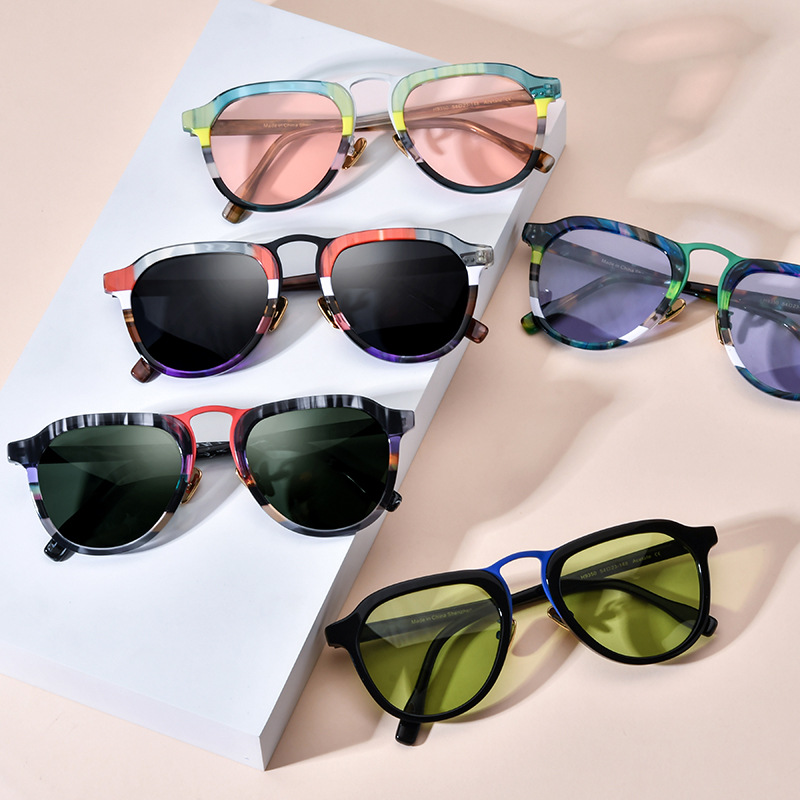When discussing the topic of how to distinguish polarized sunglasses from ordinary sunglasses, we first need to identify the core differences between the two. Polarized sunglasses, as the name suggests, filter out the specific direction of light through the principle of polarized light, so as to reduce glare and enhance visual clarity; Ordinary sunglasses are mainly through staining or coating to reduce the intensity of light, protect the eyes from ultraviolet damage.
First, principle and function differences
Polarized sunglasses: The lenses are designed based on the physical principle of polarized light, which can effectively filter out the direct light reflected from the water, snow, road surface, etc., that is, glare. This feature makes polarized sunglasses in strong light environments, such as driving, fishing, skiing and other activities, can provide a clearer and more comfortable vision, reduce the sense of eye fatigue.
Ordinary sunglasses: mainly through staining or coating on the lens to absorb or reflect part of the light, reduce the intensity of the light, protect the eyes from ultraviolet damage. However, they do not have the ability to filter light in a specific direction as polarized sunglasses do, so they may not provide a clear enough view in some bright environments.
2. Appearance and logo
POLARIZED sunglasses: There are usually clear polarized lens identification on the lenses or frames, such as the words “polarized”, “polarized”, etc., or it is indicated by special electrostatic labels. In addition, some high-end brands will also use special optical processing technology on the lens to enhance the polarizing effect.
Ordinary sunglasses: do not have the above specific polarization logo, and their lenses may only be marked with ultraviolet (UV) protection grade or brand identity.
Third, lens color and light transmission
Polarized sunglasses: The lenses come in a variety of colors, but the common ones are gray, brown and green. These colors can not only effectively reduce the light intensity, but also maintain good color reproduction and contrast under different light conditions. At the same time, due to the special design of the polarized lens, its light transmission is different in the vertical and horizontal directions, which is also the key to its ability to filter glare.
Ordinary sunglasses: the lens color is equally rich, but the light transmission is relatively uniform, and it does not have the directional filtering ability of polarized lenses. Therefore, in bright light environments, ordinary sunglasses may not be effective in reducing glare interference from specific directions.
Fourth, visual experience
Polarized sunglasses: After wearing, you can obviously feel the clarity of the field of vision and comfort. Especially in the face of water, snow and other highly reflective environment, polarized sunglasses can effectively reduce glare interference, making the eyes more relaxed.
Ordinary sunglasses: Although they can also reduce the intensity of light, they may feel slightly blurred or uncomfortable in the face of strong light and reflected light. This discomfort may be more pronounced in situations that require prolonged concentration, such as driving or outdoor work.
5. Professional testing methods
In order to further confirm whether the sunglasses have a polarizing function, a professional polarizing test card can be used for testing. The test card is usually printed with a specific pattern or line, and the clear image can only be seen through the polarized lens. In addition, it is also possible to place two pairs of sunglasses lenses perpendicular to each other and observe the object, if the line of sight becomes black, it means that at least one of the two pairs of sunglasses has a polarizing function.
The identification of polarized sunglasses and ordinary sunglasses can mainly start from the principle and function, appearance and logo, lens color and light transmission, visual experience and professional testing methods. Through comprehensive consideration and practical experience, we can easily distinguish between these two different types of sunglasses, and choose the most suitable style according to their needs.
Post time: Aug-22-2024
